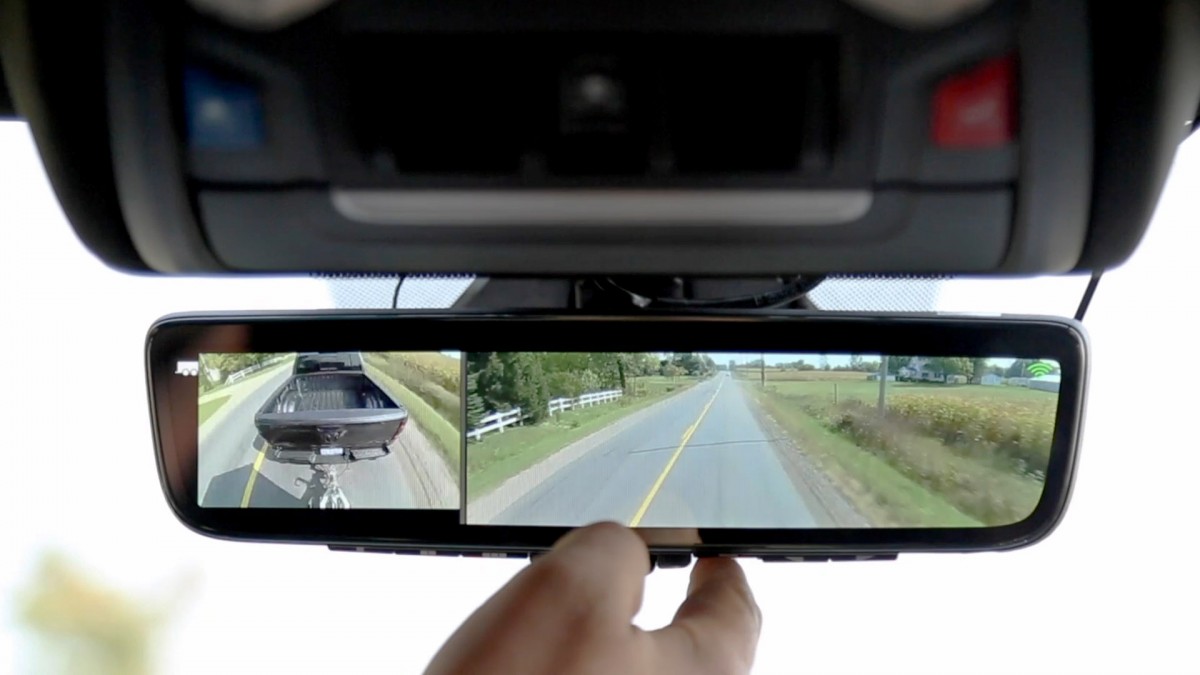The Rise of the digital Rearview Mirror: A Technological Revolution in Automotive Safety
The humble rearview mirror, a seemingly simple device, has undergone a dramatic transformation in recent years. Enter the digital rearview mirror, a cutting-edge technology that is revolutionizing how drivers perceive and interact with their surroundings. This article delves into the intricacies of this innovative system, exploring its functionalities, benefits, challenges, and the future it promises for automotive safety.
The digital rearview mirror, as the name suggests, replaces the traditional glass mirror with a high-resolution display. This display showcases real-time video footage captured by a wide-angle camera mounted at the rear of the vehicle. This innovative approach offers several distinct advantages over conventional mirrors.

2.1 Eliminating Obstructions
One of the most significant advantages of digital rearview mirrors lies in their ability to eliminate obstructions. Headrests, passengers, and cargo often hinder visibility in traditional mirrors, creating blind spots and compromising safety. Digital mirrors, however, provide an unobstructed view of the entire rear window, significantly improving situational awareness.
2.2 Improved Night Vision
Driving at night can be challenging due to glare from oncoming headlights. Digital rearview mirrors often incorporate advanced image processing algorithms, such as automatic brightness and contrast adjustment, to enhance visibility in low-light conditions. This reduces glare and improves the driver’s ability to discern objects and vehicles in the distance.
2.3 Enhanced Weather Resistance
Inclement weather conditions, such as rain, snow, and fog, can severely impair visibility in traditional mirrors. Digital rearview mirrors, however, are less susceptible to these environmental factors. The camera’s lens can be strategically positioned to minimize exposure to precipitation, and image processing algorithms can help to compensate for reduced visibility caused by adverse weather.

3.1 Blind Spot Monitoring
Many digital rearview mirror systems integrate with blind spot monitoring systems. These systems utilize sensors or cameras to detect vehicles in the driver’s blind spots and alert them with visual or auditory warnings. This crucial safety feature significantly reduces the risk of lane changes and collisions.
3.2 Lane Departure Warning
Some digital rearview mirrors incorporate lane departure warning systems. These systems use cameras to monitor the vehicle’s position within its lane and alert the driver if they are drifting unintentionally. This feature can help prevent accidents caused by distracted or fatigued drivers.
3.3 Integration with Other Advanced Driver-Assistance Systems (ADAS)
Digital rearview mirrors can seamlessly integrate with other ADAS features, such as rear cross-traffic alert, parking assistance, and autonomous emergency braking. This integrated approach provides a comprehensive safety solution, enhancing the overall driving experience.
4.1 Camera Technology
The effectiveness of a digital rearview mirror hinges on the quality of its camera. High-resolution cameras with wide-angle lenses, excellent low-light performance, and robust weatherproofing are essential for optimal performance.
4.2 Display Technology
The display technology used in digital rearview mirrors is crucial for ensuring clear and accurate image reproduction. High-definition displays with wide viewing angles and minimal latency are necessary to provide drivers with a realistic and responsive viewing experience.
4.3 Image Processing Algorithms
Sophisticated image processing algorithms play a vital role in enhancing the performance of digital rearview mirrors. These algorithms can adjust brightness and contrast, reduce glare, and compensate for adverse weather conditions, ensuring that the driver always has a clear and accurate view of their surroundings.
5.1 Initial Cost
Digital rearview mirrors are currently more expensive than traditional mirrors. However, as technology advances and production scales increase, their cost is expected to become more competitive.
5.2 Driver Acceptance
While the safety benefits of digital rearview mirrors are undeniable, some drivers may initially find the transition from traditional mirrors challenging. The unfamiliar viewing experience may require a period of adjustment and adaptation.
5.3 Regulatory and Legal Considerations
The regulatory landscape surrounding digital rearview mirrors is constantly evolving. Ensuring compliance with relevant safety standards and regulations is crucial for the widespread adoption of this technology.
6.1 Augmented Reality Integration
The integration of augmented reality (AR) technologies holds immense potential for further enhancing the capabilities of digital rearview mirrors. AR overlays can provide drivers with valuable information, such as distance to other vehicles, potential collision warnings, and even navigation cues, directly within the mirror’s display.
6.2 Enhanced Connectivity
Future digital rearview mirrors may incorporate advanced connectivity features, such as vehicle-to-vehicle (V2V) and vehicle-to-infrastructure (V2I) communication. This connectivity will enable drivers to receive real-time traffic information, alerts about potential hazards, and even warnings about impending accidents.
6.3 Integration with Autonomous Driving Systems
As autonomous driving technology advances, digital rearview mirrors will play an increasingly critical role in providing essential situational awareness for self-driving vehicles. The data captured by these systems will be invaluable for navigating complex traffic scenarios and ensuring the safe operation of autonomous vehicles.
The digital rearview mirror represents a significant advancement in automotive safety technology. By offering enhanced visibility, improved night vision, and increased resistance to adverse weather conditions, these innovative systems provide drivers with a crucial safety advantage. While challenges remain, such as cost and driver acceptance, the continued development and refinement of digital rearview mirror technology promises a safer and more efficient future for transportation. As technology continues to evolve, we can expect to see even more sophisticated and integrated systems that will redefine the driving experience and enhance road safety for all.
digital rearview mirror
